Turmeric is usually a remarkable beautiful plant with orange-red lily-like flowers and its leaves smell like mangos are deep green long slender. In India, lots of Ayurvedic doctors consider Turmeric, to be one of the best herbs of India, and many go as far as saying that it is the best. The use of turmeric dates back more than 5000 years in Vedic culture in India. it is widely used in Ayurveda Siddha and Unani medicine as a home remedy for various diseases. What Ayurveda has known for millions of years, modern science is now starting to prove for itself in clinics and laboratories around the world.
Healing Properties of Turmeric
Apart from flavoring the food, it also purifies the blood, and the remedy for the skin is the most common use of Turmeric in Ayurveda.
- The principal organs that it treats are the skin, heart, liver, and lungs.
- Sushruta recommended turmeric for epilepsy and bleeding disorders.
- Charaka Rishi (sages) recommended turmeric for treating skin diseases, purify the body-mind, and to helps the lungs expel Kapha.
- Activities of Turmeric include alterative, analgesic, antibacterial, anti-inflammatory, antitumor, anti-allergic, antioxidant, antiseptic, antispasmodic, appetizer, astringent, cardiovascular, carminative, cholagogue, digestive, diuretic, stimulant, and vulnerable.
- Turmeric uses for medicinal purposes to treat diseases include anemia, AIDS/HIV, cancer, digestion, diabetes food poisoning, gallstones, indigestion, parasites, IBS, poor circulation, staph infections, and wounds.
- To balance the female reproductive system and clearer the uterus and purifies the breastmilk, and purifies and improves sperm in men Turmeric uses.
- It decreases fevers insanity, diarrhea, poisoning, cough, urinary disorders, and lactation problems in general. Turmeric is used to treat external ulcers that treated to nothing else.
- To minimize the Kapha dosha turmeric is uses, it helps to remove the mucus from the throat, and watery discharges Such as leucorrhea, and any pus in the wounds, ears, and eyes, etc.
Chemical Composition of Turmeric:
- Protein (6.3%),
- Fat (5.1%),
- Minerals (3.5%),
- Carbohydrates (69.4%) and
- Moisture (23.1%)
- The essential oil (5-8%) obtained by steam distillation of rhizomes has α-phellandrene(1%),
- Borneol (0.5%), Sabiene (0.6%), cineol (1%), sesquiterpines (53%) , and zingiberene (25%).
Benefits of Turmeric Curcumin
- Detoxify the liver
- Balance cholesterol levels
- Fight allergies
- Stimulate digestion
- Boost immunity
- Enhance the complexion
- Reduce skin irritation
- Antioxidant
- Anti-Inflammatory
- Reduce depression
Research on turmeric
In 2009 the study conducted in Ireland found that curcumin annihilates oesophageal cancer cells in the laboratory. The researchers have discovered that curcumin began to destroy the cancer cells within twenty-four hours and the cells also began to digest themselves.
Liver damage
In 2010 Researchers in Austria and the US, recommended that curcumin can help in the fight against liver damage. It sounds to delay the onset of cirrhosis. They say their work is based on previous research which has indicated that turmeric has antioxidant and anti-inflammatory properties which may be helpful in fighting disease.
Diabetes
In 2012 a small study was conducted in Thailand, which found it can help lower the risk of type- 2 diabetes. It discovered that over nine months a regular dose of a supplement that contains curcumin seemed to prevent new cases of type 2 diabetes among certain people at risk. However, more research is needed.
Alzheimer’s disease and dementia
There are several studies conducted into the effect of curcumin on Alzheimer’s disease and dementia. In 2008, an Indian study conducted that curcumin can block the formation of the beta-amyloid plaques that get in the way of brain functions in Alzheimer’s disease. More research is required before these potential benefits are translated into a clinical setting.
Tendonitis and Arthritis
In 2011, Nottingham and Munich Researchers found that curcumin could be useful in treating painful inflammatory conditions, like arthritis and tendonitis their studies show that curcumin available in turmeric may be helpful to suppress the biological mechanisms that in the tendon diseases spark inflammation.
The researchers said it’s not an absolute cure but it may provide scientists in the future an essential new lead in the treatment of the conditions.
Chronic Inflammation and Pain
According to the study results published in the journal Oncogene, that evaluated several anti-inflammatory compounds. They discovered that ibuprofen (Advil, Motrin, etc.) and aspirin (Bayer, etc.) are least potent, while curcumin is among the most effective potent anti-proliferative and anti-inflammatory agents in the world. This means turmeric not only provides a great assurance with chronic pain, but since it has fewer side effects, it may provide safe, and lasting results.
Rheumatoid Arthritis
Due to its high anti-inflammatory properties, turmeric is highly effective in managing rheumatoid arthritis (RA). A recent study conducted in Japan, evaluated its relationship with the inflammatory cytokine, interleukin (IL)-6 known to be involved in the RA process, and discovered that curcumin “significantly reduced” these inflammatory markers. This study suggests that regular use of turmeric could be a strong strategy to prevent the onset of RA from developing, to begin with!
Depression
In Bhavnagar, Gujarat, India, The Government Medical College Researchers published the results of the first study to analyze curcumin’s ability to manage depression in a controlled setting. 60 volunteers diagnosed with major depressive disorder (MDD) and dividing the group to determine how patients treated by curcumin and compared against fluoxetine (Prozac) and a combination of the two, it found that that the principal curcuminoid in turmeric is not only as efficient as Prozac in managing depression, but it doesn’t have all the dangerous side effects as anti-depressive drugs have.
Turmeric as Remedies
Turmeric in Treating Anemia
Every day take a dose of 1 tsp of turmeric mixed with honey.
Turmeric in Treating Burns
Mix one teaspoon of turmeric with one teaspoon of aloe vera gel and apply to burnt area.
Turmeric in Treating Conjunctivitis
Mix one tablespoon of crushed, raw turmeric in one-third cup of water. Boil and sieve. 2–3 drops of this mixture is also utilized in both eyes up to Three times per day.
Turmeric in Treating Complexion
Apply a paste of turmeric on the skin before bed, and clean off after some minutes. Remove any remaining yellow tinge in the skin with a paste of chickpea flour (besan) and oil in the morning.
Turmeric in Treating Dental Problems
Mix one teaspoon of turmeric with a half teaspoon of salt. Add mustard oil to make a paste. Massage your gums and teeth twice daily with this paste.
Turmeric in Treating Diabetes
one and a half teaspoons of turmeric should be taken 3 times a day.
Turmeric in Treating Diarrhea
Take one and a half teaspoons of turmeric powder or juice in water, three times per day.
Turmeric in Treating Pain
Make a paste of 1 teaspoon turmeric and 2 teaspoons of ginger with water and mix it. Spread over a cotton cloth, place on the affected part, and bandage.
Add 1 teaspoon of turmeric to 1 cup of warm milk and drink before bed.
Other uses
Turmeric uses as a yellow coloring agent in cooking. In Hindu rituals Turmeric are treated as an important herb. It is also a cosmetics ingredient as it is beneficial for the skin. Burning turmeric can repel insects. But inhaling the smoke can assist in coughs, congested nasal passages, and asthma.
Ears, Eyes, Nose, and Mouth
- Turmeric powder, with alum 1:20, is blown into the ear to treat chronic otorrhea.
- Add a pinch of Turmeric in organic ghee and mix it, then apply this mixture to the mucus lining of the nose to stop the sniffles. It also stops nosebleeds, restores a more acute sense of smell, helps to clear the sinuses, and helps to purify the mind and brain.
- Turmeric uses to sustain the shape and integrity of our eyes.
- A Turmeric water or decoction, In the ratio of 1:20, is used to treat conjunctivitis and eye illness in general. Soak a cotton cloth in the decoction or kadha and then cover the eye with it. This provides relief to the pain as well.
Turmeric for Stomach and Intestines
- Weak stomachs
- Poor digestion
- Dyspepsia
- To normalize metabolism
- To help digest protein
- To boost the food bio-availability and the stomach’s ability to withstand digestive acids.
Turmeric is a good carminative herb, it able to calm an upset digestive system by getting rid of gas and distention? Carminatives also help to boost absorption and nurture the intestinal flora.
Taking Turmeric will work fine to balance upset digestion. Just stir a small spoon full of Turmeric in a cup of yogurt and eat right after lunch.
Directly apply a mixture of mustard oil, turmeric, and onion juice is the Remedy for ‘piles’. usually in an hour. rectal bleeding stop when you take 2 or 3 tablespoons of Turmeric every half an hour until the bleeding stops.
Feedback: Hope you liked the article, share with your friends and relatives spread the knowledge it may help them. Gives us your comment on the comment box, how useful you find this article or any suggestion you want to give us, just write us in the comment box below.



Useful information Nitin.
Nice information..
The journal Oncogene published the results of a study that evaluated several anti-inflammatory compounds. It found that aspirin (Bayer, etc.) and ibuprofen (Advil, Motrin, etc.) are least potent, while curcumin is among the most potent anti-inflammatory and anti-proliferative agents in the world. (9) This means turmeric not only has great promise with chronic pain, but since it has less side effects, it may provide safe, lasting results
turmeric
Thank you for this blog. That's all I can say. You most definitely have made this blog into something thats eye opening and important. You clearly know so much about the subject, you've covered so many bases. Good stuff from this part of the internet. Again, thank you for this blog.
tms for panic disorder
Thanks for your appreciation Joe. I try to bring more valuable information through this blog.
I impressed by the quality of information on this website. There are a lot of good resources here. I am sure I will visit this place again soon.
emergency lactation brownies
Thanks for your appreciation.Your valuable comments gives us motivation to write more useful article.